ISSC
2016
About Santorini
The island of Santorini is probably the most intriguing island of Greece. Santorini is an island in the southern Aegean Sea, about 200 km (120 mi) southeast of Greece's mainland. It is located in the South part of Aegean Sea. It is the largest island of a small, circular archipelago which bears the same name and is the remnant of a volcanic caldera. Santorini is also called Thira and its capital is the town of Fira. The surface area of Thira is 73 sq. km. and its population, distributed among thirteen villages, is 15.250 people, according to the 2011 census.
The island was formed out of the lava from the volcanic eruption in 1660 BC. The volcanic explosion destroyed the earliest settlements on a formerly single island, and created the current geological caldera. The central part of the volcano sank into the sea leading to the emergence of Santorini itself and the tiny neighbouring islands of Thirasia, Palaia and Nea Kameni. Today, Santorini is the only inhabited Caldera (volcano cauldron) in the world. Due to this, many believe that Santorini really is Atlantis because of its location. The geological uniqueness however is not the only thing that makes Santorini a special holiday destination but also the coloured strata of the volcanic rock of these cliffs (chocolate brown, rust red, yellow ochre, white and cream).

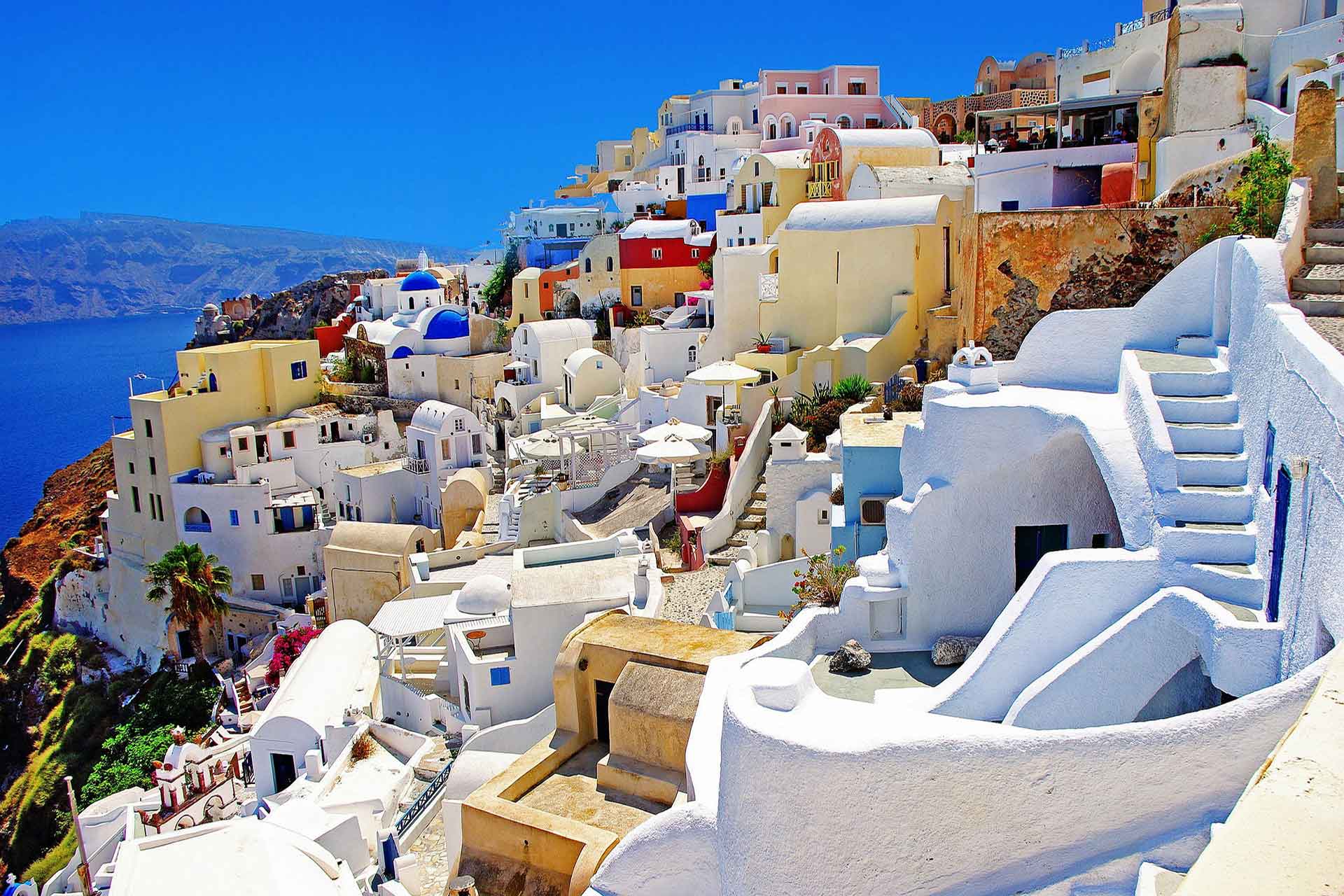
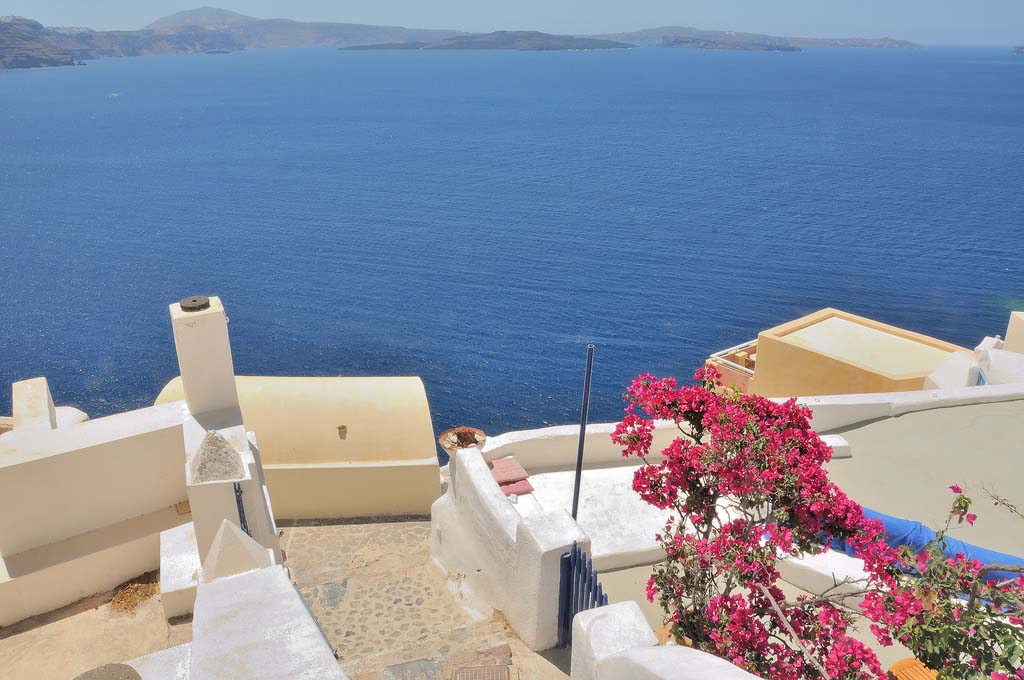
Unlike other islands in Greece, the towns and villages, Fira, Oia, Imerovígli and Firostefáni, which sit densely on top of the massive cliffs of the Caldera and from a distance appear like snow capping the towering mountain tops, make up the so-called "Caldera's eyebrow", the balcony of Santorini. "Caldera's eyebrow" offers an amazing view of the volcano. The capital of the island, Firá looks like a marvelous painting.
The spectacular sunsets that occur on this island are the most read almost by everyone. The sunsets at Santorini, viewed from the Caldera, really are breathtakingly beautiful when seen as a backdrop to the volcano. The colours that streak the sky change from lilac to deep purple, from yellow to orange to red, as the golden sun sinks and becomes blood red reflecting its light on to the sea and the surrounding little islands, an amazing scene for photography. The eastern slopes of the island are green and fertile, even in October. This is due to the copious vineyards that grow so well in the fertile volcanic soil. The nature of the dry soil of Santorini produces grapes that make up one of the best wines of Greece.
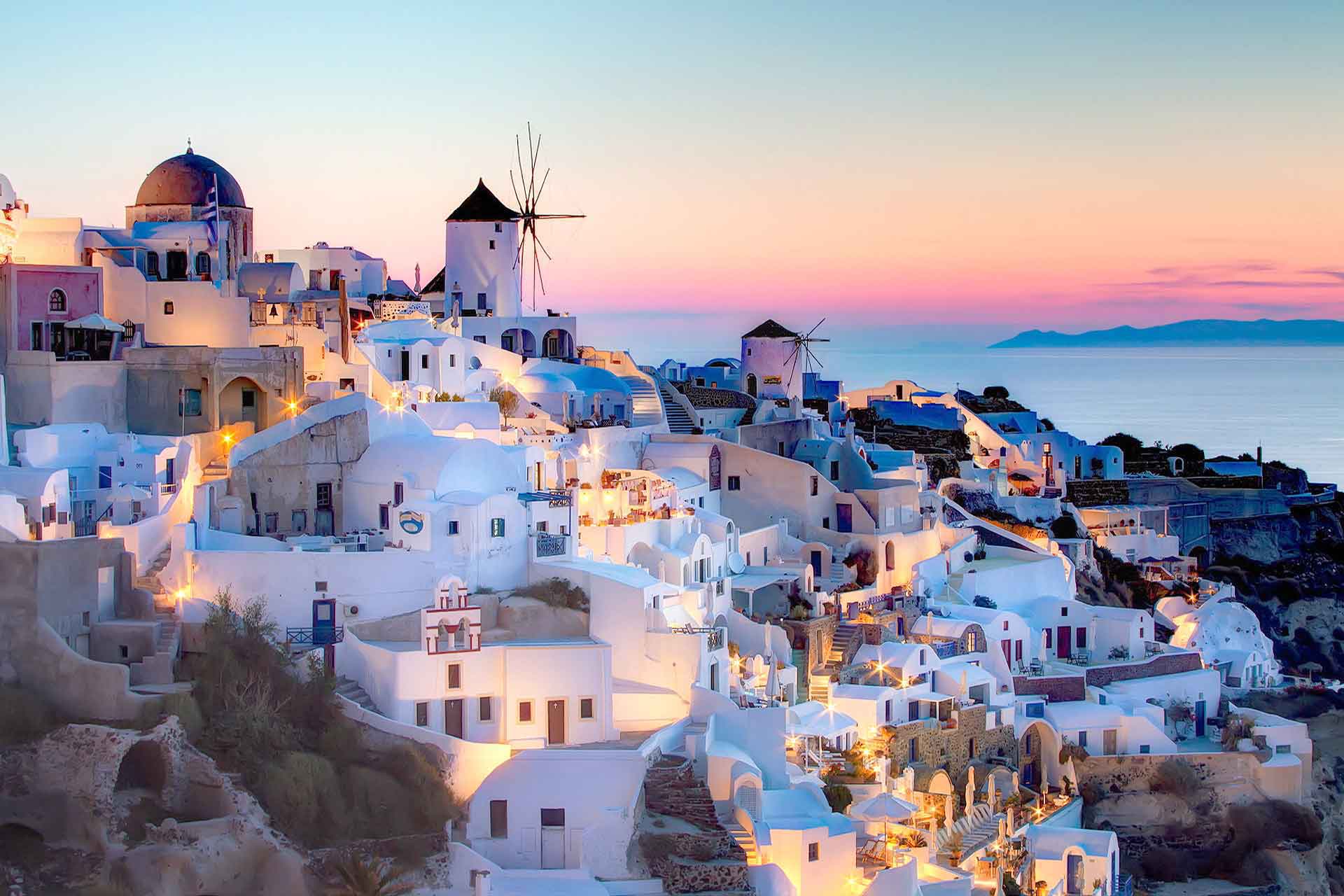
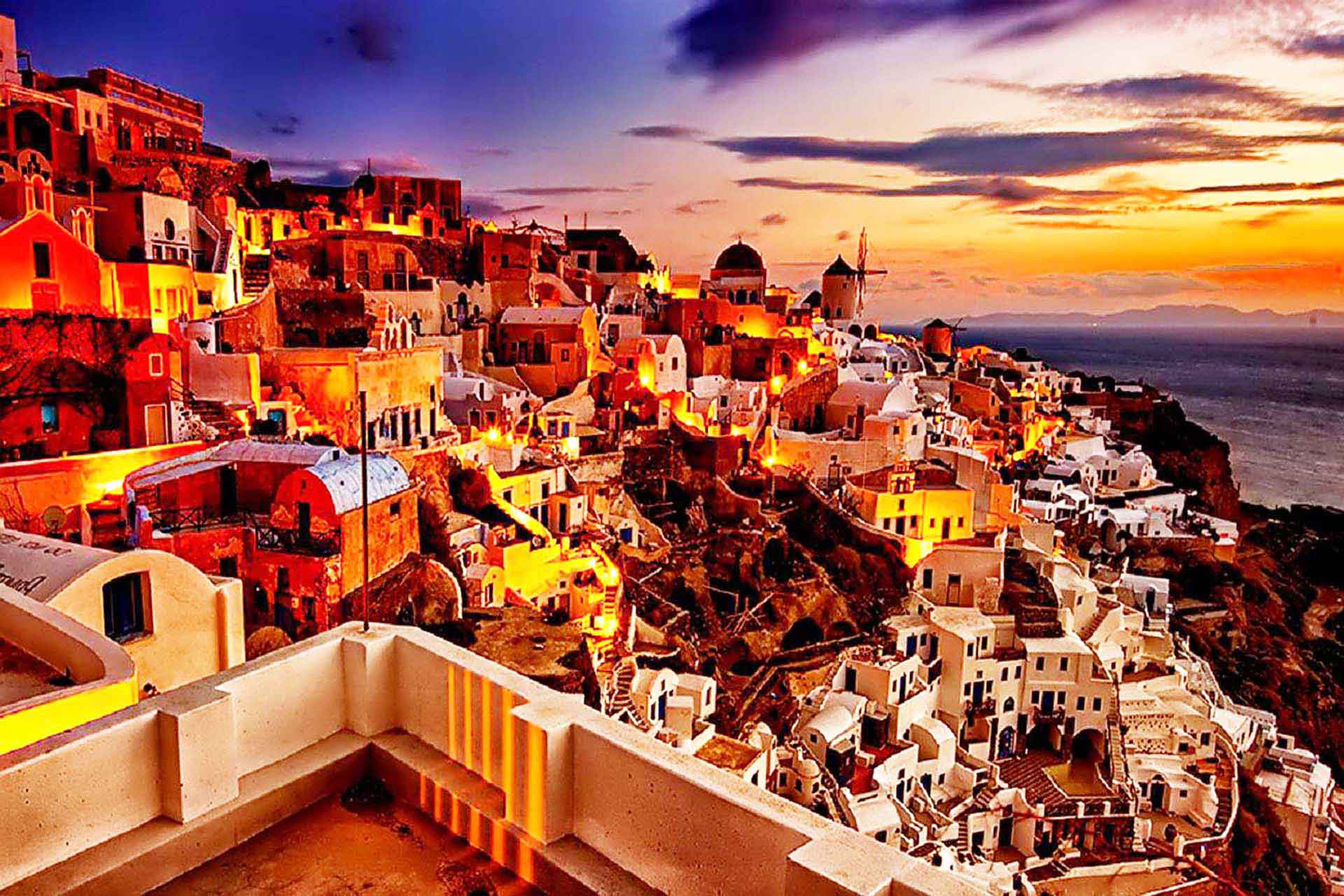

All of Santorini is a site. The significant archaeological places (Akrotiri, Ancient Thera) the museums, the monasteries, the churches, the tenable settlements, the volcano, are all pieces of a puzzle that join yesterday with today and prove how special Santorini is.
What characterizes Santorini is the life tempos as well. It's one of the most cosmopolitan islands in Greece with large tourist development. It offers high standard services to all visitors. Santorini has an airport that connects the island with Athens and most of the big cities, while in its port arrive in everyday courses ferries from Piraeus, Crete and the rest of Cyclades islands.
The beaches in Santorini are much different than other beaches in Greece due to their special geographical features. Red and black volcanic pebbles lay the shores of Santorini beaches and steep cliffs provide a picturesque ambience. The most famous of Santorini beaches is the Red beach, while particularly popular are Perissa, Kamari and Perivolos.
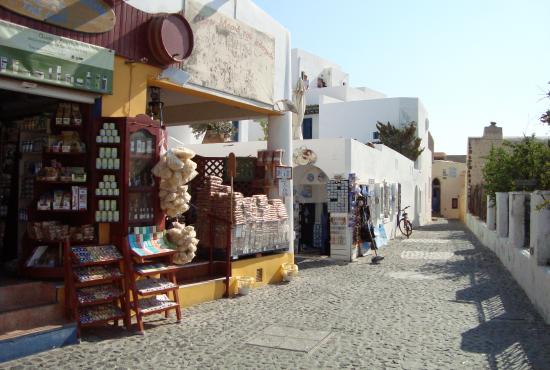
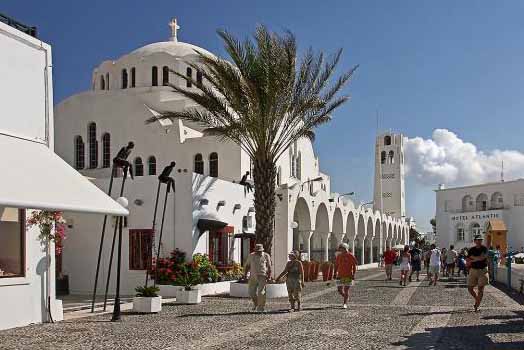
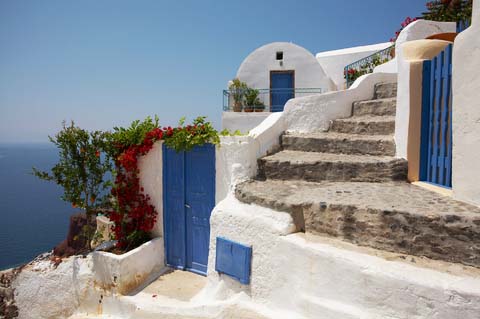
Since the 1st of January 2002, the Euro (EUR) is the currency of Greece. Banks exchange all major currencies in cash, travellers' cheques or Eurocheques. Banknote exchange machines and ATMs can be found in most tourist areas. Credit cards can be accepted by all supmarket shops, restaurants and hotels. The following notes 5, 10, 20, 50, 100, 200 and 500 euro are in circulation while coins are in denominations of 1 euro, 2 euro, 1 cent, 2 cents, 5 cents, 10 cents, 20 cents and 50 cents.
The climate in Santorini is typically Mediterranean with generally extended periods of sunshine throughout most of the year, relatively warm and dry summers and mild and rainy winters. The year can be broadly subdivided into two main seasons: the warm and dry season lasting from April until October and the cold and rainy season lasting from November until the end of March. During the warm and dry season the sky is clear, the sun is bright and there is generally no rainfall. A sweater/jacket is advised, especially in April and October, as evenings often bring cooler temperatures.
For more details for the island visit the official site of Santorini.